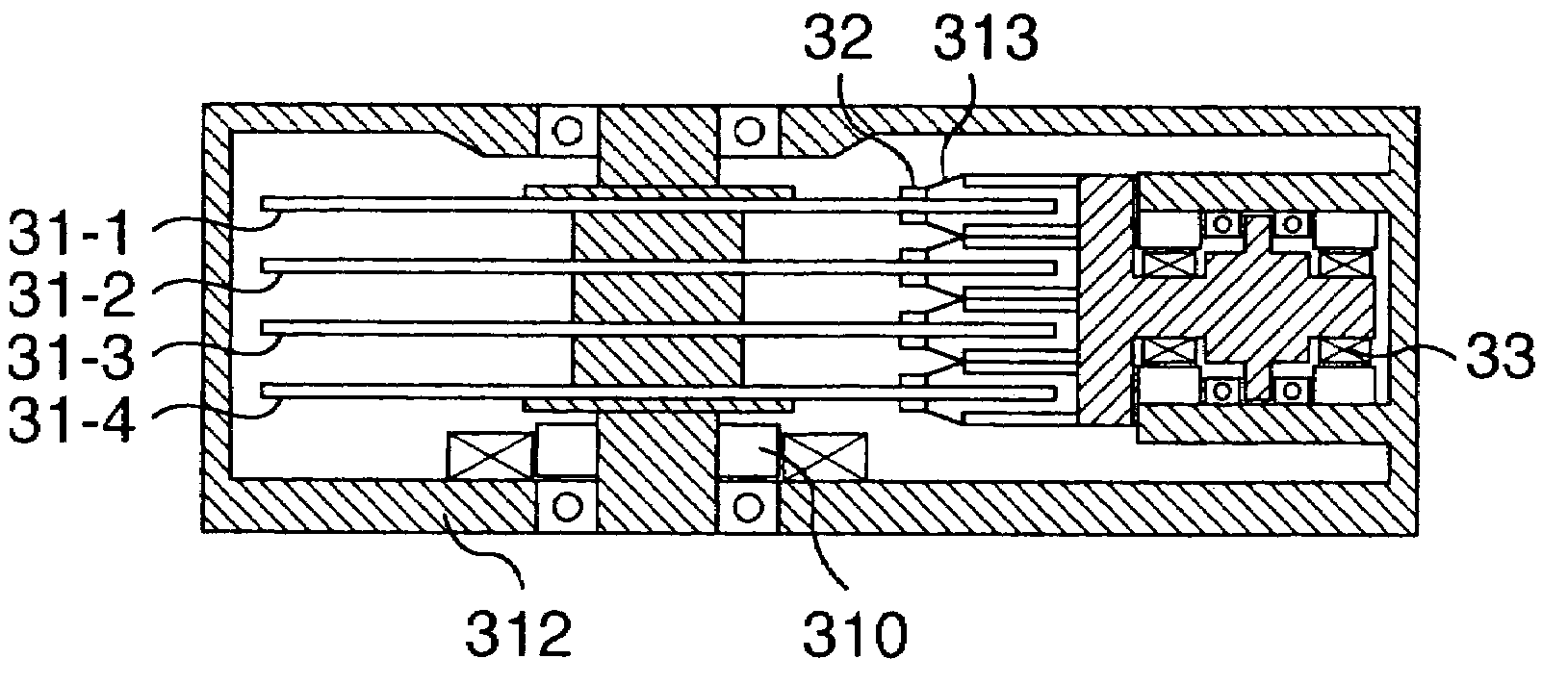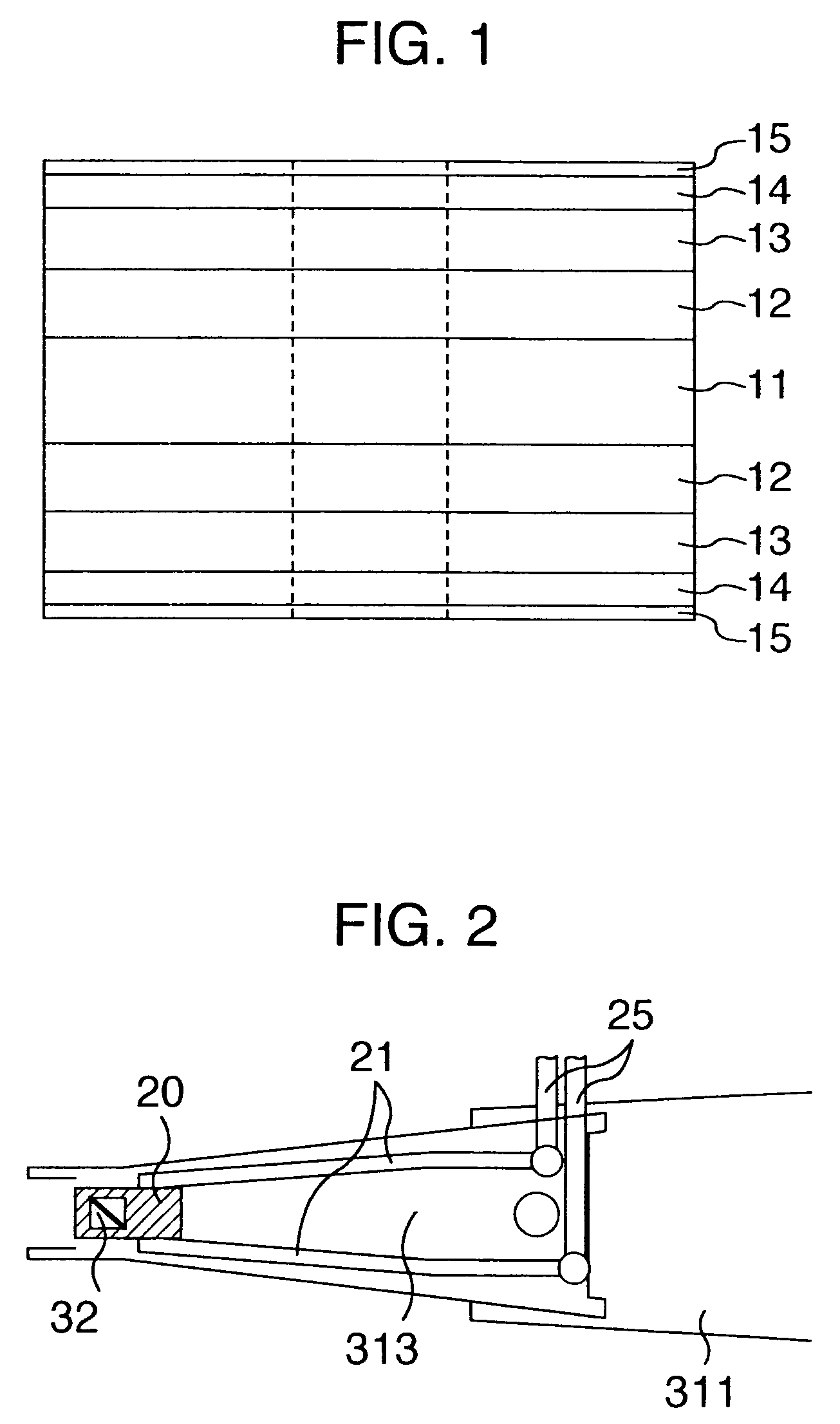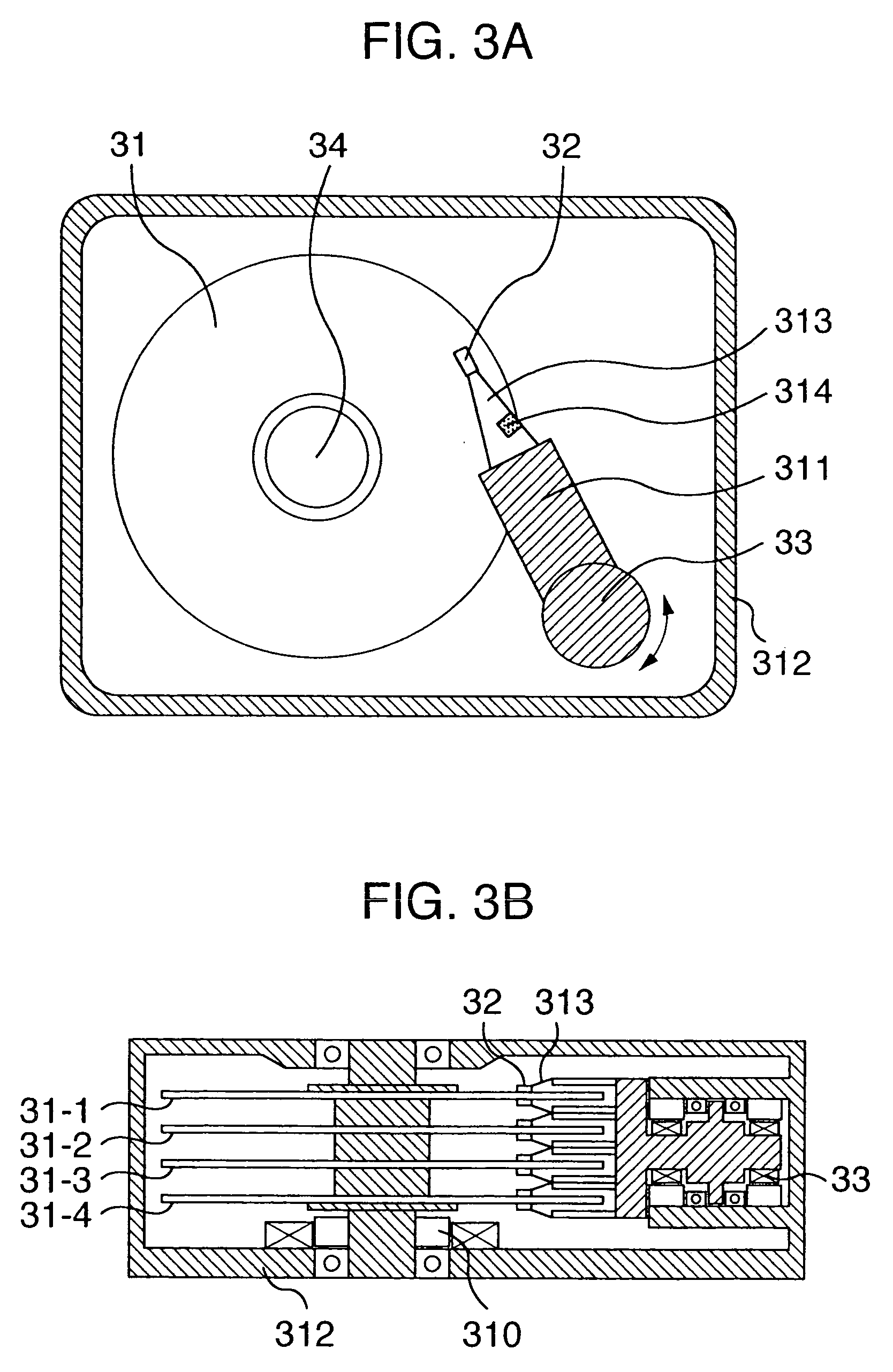Magnetic recording and reading device
a reading device and magnetic recording technology, applied in the field of magnetic recording and reading devices, can solve the problems of inability to accurately record on the recording device, inability to perform recording and reading, and increase noise, etc., to achieve the effect of reducing the absolute value of the normalized noise coefficient, reducing noise, and improving noise reduction
- Summary
- Abstract
- Description
- Claims
- Application Information
AI Technical Summary
Benefits of technology
Problems solved by technology
Method used
Image
Examples
example 2
[0056]Another example of the present invention is explained by referring to the conceptual drawing of a magnetic head assembly shown in FIG. 4. For a magnetic head 42, first as recording elements, 40Ni-55Fe-5Cr with a saturation magnetic flux density of 1.4 T and a resistivity of 60 μΩcm was used as the material for a magnetic pole 117 with a track width of 0.6 μm and another magnetic pole 118 was formed from CoTaZr with a resistivity of 120 μΩcm in FIG. 11A. Track width fabrication was performed by trimming on the basis of the FIB technology as with Example 1. A record gap length of 0.25 μm (material for the gap: Al2O3-3% SiO2) was selected, the magnetic core length l1 was 30 μm, and an Al coil 116 of 2 layers and 12 turns was used. Furthermore, the read element was fabricated as follows. A magnetically free NiFe / Co film (6 nm), a CuNi film (2.5 nm), a magnetically fixed layer of CoFe / Ru / CoFe film (6 nm) and an MnIr film (15 nm) were first formed one after another and a rectangular...
example 3
[0059]A third example of the present invention is described below by referring to FIGS. 5A and 5B, FIGS. 8A and 8B and FIGS. 3A and 3B.
[0060]As shown in FIGS. 5A and 5B, a laser chip 52, 52′ of about 0.3 mm square was mounted on a position-correcting mount 51, 51′ of the piezoelectric force type, electromagnetic force type or magnetostrictive force type. The laser chip thus mounted on the position-correcting mount was then mounted on a head slider 50, 50′ as shown in FIGS. 5A and 5B to permit adjustments so that a recording and reading element portion 53, 53′ and a laser beam position 54, 54′ are located almost on the same record track 55, 55′. An Al2O3—TiC slider of shaped rail structure with a size of 0.7×0.2 mm3 (FIG. 5A), provided with three minute projections, was used and a 3-nm thick protective film of C—N was provided on the floating surface. The volume including the laser chip (FIG. 5B) was 1.0×0.9×0.2 mm3, and the distance over which corrections are possible was 20 μm maxi...
example 4
[0072]The heads of Example 3 were also adopted as the magnetic heads of Example 1 and Example 2 and evaluated. In all of these heads of Example 3, operation of the device at areal densities of not less than 7 Gb / in2 and data transfer rates of not less than 60 MB / s were verified and characteristics equal to or better than those obtained in Example 1 and Example 2 were obtained. This was especially preferable in terms of data transfer rate. When the magnetic pole length was 55, 60, and 65 μm, recording and reading were possible at a data transfer rate of from 60 to 65 MB / s. However, when the magnetic pole length was not more than 50 μm, data transfer rate of from 66 to 70 MB / s was possible. This was especially preferable. It was ascertained by a computer simulation that it is important to reduce not only the magnetic core length l1, but also the magnetic pole length l2 because eddy currents are generated in the rear part of a magnetic pole. The R / W-IC portion was separated from the si...
PUM
| Property | Measurement | Unit |
|---|---|---|
| length l1 | aaaaa | aaaaa |
| length l1 | aaaaa | aaaaa |
| width | aaaaa | aaaaa |
Abstract
Description
Claims
Application Information
 Login to View More
Login to View More - R&D
- Intellectual Property
- Life Sciences
- Materials
- Tech Scout
- Unparalleled Data Quality
- Higher Quality Content
- 60% Fewer Hallucinations
Browse by: Latest US Patents, China's latest patents, Technical Efficacy Thesaurus, Application Domain, Technology Topic, Popular Technical Reports.
© 2025 PatSnap. All rights reserved.Legal|Privacy policy|Modern Slavery Act Transparency Statement|Sitemap|About US| Contact US: help@patsnap.com



